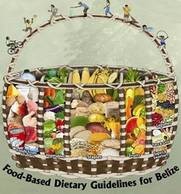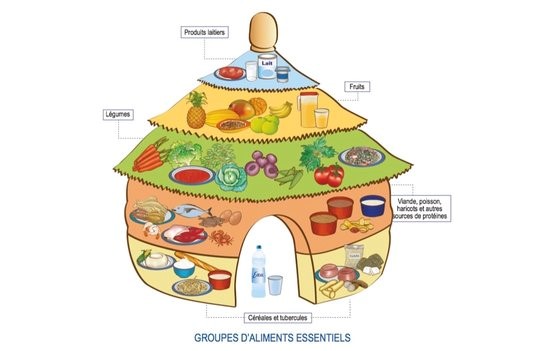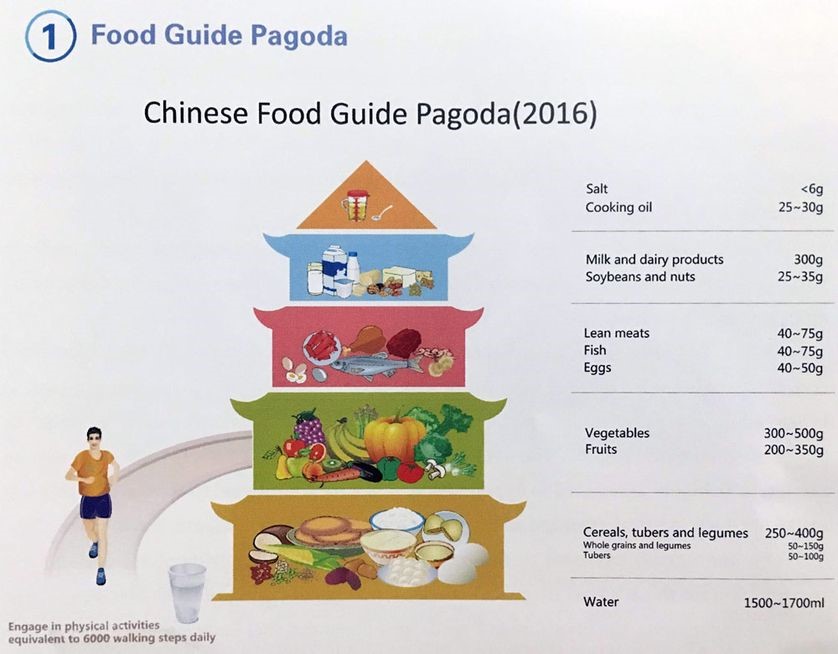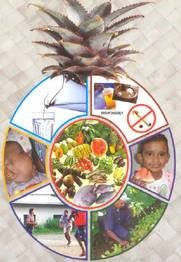Phipps Feature: "One Great Plate"

While enjoying food is a universal experience, the food
guides that represent each country’s cuisine are uniquely individual. Each
guide displays nutritional advice and current eating guidelines in an
aesthetic, informative graphic. Here are 10 exceptional food guides from across
the globe!
Belize- Food Basket

This Central American ‘shopping basket’ sorts foods into
seven unequally sized sections that correspond to the country’s dietary
guidelines. Across the handle of the basket are images of people engaged in
various forms of physical activity. The basket serves as a reminder that
‘shopping smart’ and ‘exercising regularly’ are two components of a healthy
lifestyle.1
Benin-Traditional African House

Benin’s nutritional guidelines form the façade of a
traditional thatched-roofed African house. The illustration specifies five food
groups with the most significant—grains & tubers—being located at the
house’s base. Water is depicted in the home’s entryway to serve as a symbol of
Beninese hospitality.2
China- Pagoda for Chinese Residents

The Chinese Food Guide Pagoda proportionally depicts 5
unique food groupings: (1) whole grains, tubers, & legumes, (2) fruits
& vegetables, (3) lean meats, fish & eggs, (4) soybeans, nuts, &
dairy, and (5) salts & oils. Citizens are to reference the recommended
daily consumption standards, listed to the right of the illustration (by
weight), when deciding which foods to consume. This is because the graphic was
designed to take group elements singly, versus holistically.3
Fiji- Pineapple

Fiji’s pineapple-shaped food guide could aptly double as a
healthy lifestyle guide. The South Pacific Island nation urges its residents to
eat mindfully—as nutrition is central to wellness. The guide emphasizes other
nutrition-specific health messages, including: drinking responsibly, avoiding
smoking, breastfeeding for six months, and growing your own food.4
Finland—Finnish Food Triangle

Photographed images of whole foods are exhibited on a
chalkboard display to showcase the vibrancy of Finnish fare. The pyramid
proposes that plant and seafood-based cookery is affordable, eco-friendly, and
nutritious, especially when compared to conventional animal-based diets.5
France- National Health Nutrition Program

As opposed to one universal food guide, the National Health
Nutrition Program of France provides 25 food-based portraits that represent
different patterns of eating. Each pattern specifies a distinct life situation
or behavior, such as: “I do not cook”, “I want to eat, protect my health, and
enjoy it”, or “I struggle to make ends meet”. Recognizing that nutrition is not
‘one-size-fits-all’, the program provides more detailed nutrition advice under
each heading, which have been tailored to unambiguous audiences.6
Japan- Spinning Top

The Spinning Top of Japan inverts the traditional pyramid
layout by placing the food groups of most importance at the top (versus at the
base) of its structure. Water flows through the top’s core to illustrate its
universal significance. A running silhouette is pictured to highlight that
eating patterns should be adapted based upon one’s physical activity level.7
Netherlands- Wheel of Five

The Netherland’s Wheel of Five neatly objectifies 5
subdivisions of the Dutch diet. Interestingly, the graphic includes ‘beverages’
as a significant ‘slice of the pie’ in order to encourage citizens to drink
coffee and tea with meals in addition to water.8
Qatar- Qatar Dietary Guidelines

Qatar’s shell-shaped plate represents six food groups while
purposefully omitting products that are high in fats, sugars, and sodium—as
these foods should be entirely expunged from the diet. Water is represented in
the guide as a reminder to select sustainable, ecological options.9
United States- MyPlate

In 2011, the United States introduced MyPlate as a
consumer-based, customizable food guide, which serves as a reminder for healthy
eating at each meal. MyPlate reminds Americans to fill half of their plate with
fruits and vegetables and to regularly consume appropriate amounts of grains,
protein, and dairy foods. More specific nutrition guidelines are included in
the USDA’s 2015-2020 Dietary Guidelines for Americans (DGA).10
By Jessica Rea, Sports Medicine and Nutrition Student with Let's Move Pittsburgh
Additional Resources:
Miller SG. 6
Distinctive Food Guides from Around the World. LiveScience. Published
May 19, 2016. Accessed July 3, 2018.
Shreeves R. What
food pyramids look like around the world. MNN - Mother Nature Network.
Published October 17, 2017. Accessed July 3, 2018.
Sources:
1. Belize.
fao.org. Accessed July 3, 2018.
2. Benin.
fao.org. Accessed July 3, 2018.
3. China.
fao.org. Accessed July 3, 2018.
4. Fiji.
fao.org. Accessed July 3, 2018.
5. Finland.
fao.org. Accessed July 5, 2018.
6. France.
fao.org. Accessed July 5, 2018.
7, Japan.
fao.org. Accessed July 5, 2018.
8. Netherlands.
fao.org. Accessed July 3, 2018.
9. Qatar.
fao.org. Accessed July 5, 2018.
10. A Brief
History of USDA Food Guides. Choose MyPlate. Published May 11, 2017.
Accessed July 5, 2018.
Original Post: July 18, 2018. https://www.phipps.conservatory.org/blog/detail/one-great-plate
Photo credit: Pixabay, CC0 Creative Commons
Comments
Post a Comment